

British Phaenogamous Botany is a book of figures and descriptions of British flowering plants compiled by the botanist William Baxter.


British Phaenogamous Botany is a book of figures and descriptions of British flowering plants compiled by the botanist William Baxter.
The six volumes were published by Baxter himself in Oxford and sold by J.H. Parker as well as Whittaker, Treacher, and Co. in London. [1]
The 509 hand-coloured copper-engraved plates were accompanied by botanical descriptions in octavo. To illustrate this work on the British flora, Baxter employed two local artists—a glass painter named Isaac Russell and C. Matthews. The plates were hand-coloured by Baxter's daughters and daughter-in-law. The original copies of these plates are located in Lindley Library. [2]

Sir James Edward Smith was an English botanist and founder of the Linnean Society.
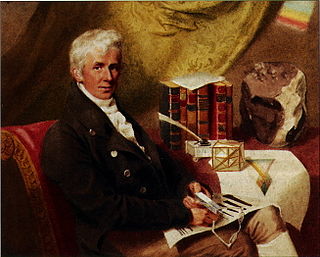
James Sowerby was an English naturalist, illustrator and mineralogist. Contributions to published works, such as A Specimen of the Botany of New Holland or English Botany, include his detailed and appealing plates. The use of vivid colour and accessible texts were intended to reach a widening audience in works of natural history. The standard author abbreviation Sowerby is used to indicate this person as the author when citing a botanical name.

John Lindley FRS was an English botanist, gardener and orchidologist.
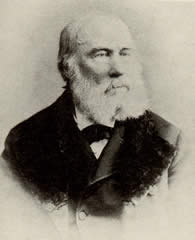
Walter Hood Fitch was a botanical illustrator, born in Glasgow, Scotland, who executed some 10,000 drawings for various publications. His work in colour lithograph, including 2700 illustrations for Curtis's Botanical Magazine, produced up to 200 plates per year.
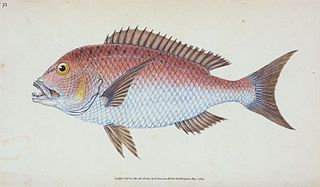
Edward Donovan was an Anglo-Irish writer, natural history illustrator, and amateur zoologist. He did not travel, but collected, described and illustrated many species based on the collections of other naturalists. His many books were successful in his time. He died penniless in 1837 leaving a large family destitute.

The Botanical Magazine; or Flower-Garden Displayed, is an illustrated publication which began in 1787. The longest running botanical magazine, it is widely referred to by the subsequent name Curtis's Botanical Magazine.

William Henry Harvey, FRS FLS was an Irish botanist and phycologist who specialised in algae.
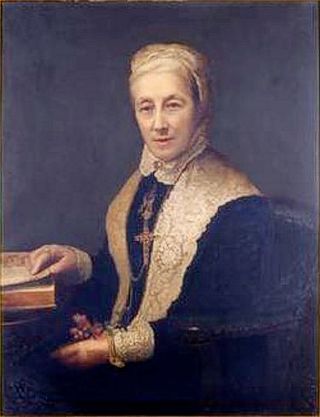
Elizabeth Twining (1805–1889) was an English painter, author, and botanical illustrator. She is best known for her detailed botanical illustrations, especially the two-volume Illustrations of the Natural Order of Plants, which was published between 1849 and 1855. She was an heiress of the Twinings family of tea merchants and was a philanthropist.

Henry Cranke Andrews, was an English botanist, botanical artist and engraver. As he always published as Henry C. Andrews, and due to difficulty finding records, the C. was often referred to as Charles, until a record of his marriage registration was found in 2017.
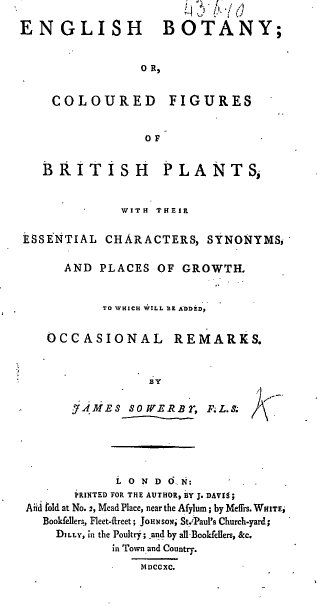
English Botany was a major publication of British plants comprising a 36 volume set, issued in 267 monthly parts over 23 years from 1790 to 1814. The work was conceived, illustrated, edited and published by the botanical illustrator and natural historian, James Sowerby. The brief formal technical descriptions were mostly supplied by the founder of the Linnean Society, Sir James Edward Smith. Initially Smith had declined to have his name associated with the work as he considered that his professional co-operation with a socially inferior artisan such as Sowerby might degrade his standing in higher circles. However, following the phenomenal public success and general acceptance by the professional class of the work he insisted that the title page of the fourth and succeeding volumes credited the work to his name with Sowerby named solely as the illustrator. The work, however, continued to be generally referred to as "Sowerby's Botany". In spite of this abuse of their social class differences by Smith, the two men were good friends and happily worked together on several projects over many years. The work was printed by J. Davis, London; initially on Edmeads and Pine laid paper.

Flora Londinensis is a folio sized book that described the flora found in the London region of the mid 18th century. The Flora was published by William Curtis in six large volumes. The descriptions of the plants included hand-coloured copperplate plates by botanical artists such as James Sowerby, Sydenham Edwards and William Kilburn.

John Ralfs was an English botanist. Born in Millbrook, near Southampton, he was the second son of Samuel Ralfs, a yeoman of an old family in Hampshire. He has been commemorated in the names of many plant groups and taxa at many levels.
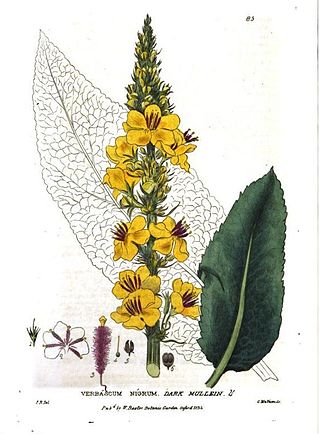
William Baxter ALS, FHS, was a British botanist, author of British Phaenogamous Botany and appointed curator of the Oxford Botanic Garden in 1813.

Robert John Thornton (1768–1837) was an English physician and botanical writer, noted for A New Illustration of the Sexual System of Carolus Von Linnæus (1797–1807) and "The British Flora" of 1812.

Benjamin Maund (1790–1863) was a British pharmacist, botanist, printer, bookseller, fellow of the Linnean Society (1827) and publisher of the Botanic Garden and The Botanist. He served on the committee of the Worcestershire Natural History Society where he started a monthly botanical publication.
Robert James Shuttleworth was an English botanist and malacologist.
Thomas Velley was an English botanist.
William Henry Pearson (1849–1923) was an English bryologist, known as an outstanding expert on British liverworts (hepatics).
Isaac Hugh Russell was a glass painter by trade, but is best known for his botanical illustration of W. Baxter's British Phaenogamous Botany. He lived and worked in the Oxford area in the early 19th century.